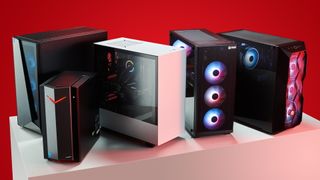Microsoft's auto AI upscaler will only be available on Snapdragon-powered Copilot+ AI PCs to begin with
And narrowing down its scope even further, it'll only work on a very small number of games.

Earlier this year, it came to light that Microsoft had been developing an AI upscaler for Windows, called Automatic Super Resolution (ASR). The concept behind the system is that any game can get a boost in performance and better anti-aliasing, even if it doesn't support DLSS, FSR, or XeSS. Microsoft has now made the feature available, except very few people will get to use it for now because it's only enabled on new Copilot+ AI PCs that sport Qualcomm's Snapdragon X processor.
The details of this limitation are found in the newly updated FAQ section of Microsoft's Copilot AI PC page (via Videocardz). The main reason why it's currently limiting its new technology to these specific Arm-based PCs is two-fold.
Firstly, it provides an additional promotion for Microsoft's Copilot+ AI PC ecosystem, and secondly, the Snapdragon X range is the only one currently available that meets the 40 or higher TOPs NPU requirement.
NPUs, or neural processing units, are specialised accelerators for common calculations and data formats involved with AI operations. Think of them as being generalised versions of Nvidia's Tensor cores. AMD and Intel have them in some of their chips (e.g. Ryzen 7 8040U, Core Ultra 7 165H) but they don't have sufficient performance, measured in TOPS (tera operations per second), to meet the standard NPU rating set by Microsoft.
The concept behind ASR is a good one. While lots of modern games have built-in support for AMD, Intel, or Nvidia upscalers, most older ones don't and if you have a budget-level laptop, the integrated graphics processor might not be powerful enough to run such games at a decent frame rate. Microsoft's system gets around this problem by having an upscaler that can be applied to any game.
Well, that's the idea. Reality is somewhat different, as the number of games that ASR will actually work on is currently limited to just 12. I suspect that this is because these are the only games that run well enough on the Arm version of Windows and have also passed internal testing of ASR.
You can see the full list of supported games in this independent database, that Microsoft contributes to—just click on the Auto SR button to select those titles that use the upscaler.
The biggest gaming news, reviews and hardware deals
Keep up to date with the most important stories and the best deals, as picked by the PC Gamer team.
Automatic Super Resolution will probably end up rolling out across all Windows platforms, once AMD and Intel have CPUs on the market that meet the 40 or higher TOPS requirement. But what about everyone else? What if you have a PC that doesn't have an NPU?
I strongly suspect that you're going to be out of luck, as Microsoft is unlikely to change its Copilot+ requirements and despite having more than enough AI performance to meet the necessary level, GPUs just aren't classed as NPUs.

Best gaming PC: The top pre-built machines.
Best gaming laptop: Great devices for mobile gaming.
Intel and Nvidia don't have a generic, one-click AI upscaler that can be automatically applied to any game, unfortunately, as DLSS and XeSS all require the code for them to be implemented directly into the game.
Only AMD offers anything like ASR, via its Radeon Super Resolution feature. While that requires the PC to have a Radeon RX 5000-series or better graphics card, laptops with one of AMD's more recent APUs, like the aforementioned 8040U range, should work fine.
Automatic Super Resolution could have been the first really useful addition to Windows for a long time but as things currently stand, its arrival is going to be very much of a whisper and not the bang it deserves to be.

Nick, gaming, and computers all first met in 1981, with the love affair starting on a Sinclair ZX81 in kit form and a book on ZX Basic. He ended up becoming a physics and IT teacher, but by the late 1990s decided it was time to cut his teeth writing for a long defunct UK tech site. He went on to do the same at Madonion, helping to write the help files for 3DMark and PCMark. After a short stint working at Beyond3D.com, Nick joined Futuremark (MadOnion rebranded) full-time, as editor-in-chief for its gaming and hardware section, YouGamers. After the site shutdown, he became an engineering and computing lecturer for many years, but missed the writing bug. Cue four years at TechSpot.com and over 100 long articles on anything and everything. He freely admits to being far too obsessed with GPUs and open world grindy RPGs, but who isn't these days?
Most Popular






